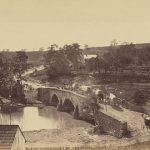by Joan Neuberger
Photographs of war, more than photographs of any other subject, make war seem both very distant and impossibly close.
The earliest war to be extensively caught on film was the Crimean War, waged by allies France and Britain against Russia in 1853-55. Roger Fenton’s photographs of that war have been digitalized and made available in a number of sites, including the Library of Congress. Sepia tinting, lines of pristine white tents, soldiers on horseback make that war seem very distant, almost illegible.

One of Fenton’s photographs was the subject of a New York Times blog series (and now a book) by the film maker and photographer Errol Morris, who, together with Philip Gourevitch, wrote the best book on the soldiers who photographed their abuse of prisoners at Abu Ghraib, Standard Operating Procedure.
During the Crimean War and the US Civil War, the size of camera equipment and slow speed of the film made action shots impossible. Civil War photographer Mathew Brady and his team of field photographers, like Fenton before them, would often rearrange corpses for dramatic effect.

Two hundred of Civil War era photographs can be seen here on the National Archives website.
In honor of Veterans’ Day, the George Eastman House International Museum of Photography and Film has posted 576 photographs of soldiers and war scenes, primarily from the nineteenth and early twentieth centuries. And the New York Times has posted a series of photos from readers, “Lives During Wartime,” with background descriptions by those shown in the photos.
More recent wars can be seen in such unforgettable detail that war and its impact can seem very close — and still very difficult to fully comprehend.
This series of photographs by Kate Brooks on the Foreign Policy website, “This is What War Looks Like,” makes one wonder how any responsible government can justify the human costs of war.
But then photographs of “Afghanistan, October 2011,” posted this week on the excellent Boston Globe photojournalism site, “The Big Picture,” makes palpable how hard it is sometimes to weigh the varied results of war.

You may also enjoy:
Looking at World War II here on NEP
and More Looking at World War II
On the history of photographs of wars in Afghanistan on NPR
A brief general history of war photography



